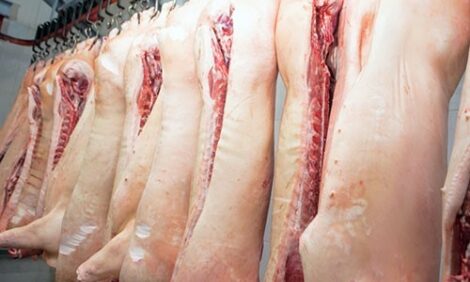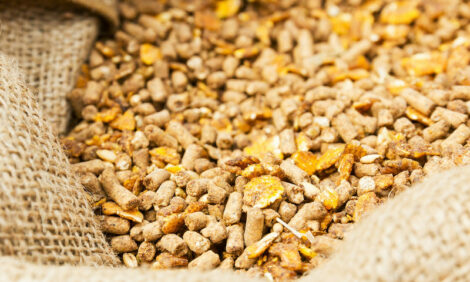



Feeding for performance with group sow housing
UK - New systems of group-housing sows, which have affected the ability of the pig producer to tailor feeding to individual sows and led to increased hierachical competition, has challenged conventional thinking on sow feeding. ACMC animal scientist Grant Ward says new systems have challenged conventional thinking on sow feeding. |
Although the feeding of weaned sows was often thought to influence onset of oestrus and number of eggs shed at ovulation, latest research suggests the nutrition of sows in the farrowing house probably has more influence on subsequent breeding performance than feed intake immediately post-weaning.
It is now believed that sows' follicular development - and thus the quality and quantity of eggs released at ovulation - is influenced during the lactation phase, says Grant Ward, animal scientist with pig-breeding company ACMC Ltd.
Writing in the company's "Technical Update" newsletter, he points out that it is possible that the feeding regime in the farrowing house is not only important for the milking performance of the sow for its current litter and its own condition, it may also be highly influential on the number of potential embryos for the next litter. "This is another good reason for maximising the feeding intake of lactating sows," he says.
However, research by Kongsted, in which various group-housing systems were analysed for performance, suggests that continued low feed intake during the three weeks after service may negatively affect the chances of a successful pregnancy and litter size. Conception appears to be influenced by the degree of loss or gain of backfat from weaning to three weeks after mating which, in turn, is influenced by feed intake.
Group housing did not severely influence weaning-to-service interval but first-parity sows were more sensitive to poor body condition than older sows. It was suggested, therefore, that younger sows should be given more attention in a group-housing system.
Grant Ward therefore advises producers to give serious attention to the type of accommodation - such as installing feeding stalls - when designing or altering buildings for weaned sows. Stocking levels in weaned groups should be set to avoid over-competition at feeding and water points, with special attention given to younger and poorer conditioned sows, using segregation as an option.
"The price of designing a sow system should not overshadow the cost of possible reduced performance," he commented.








